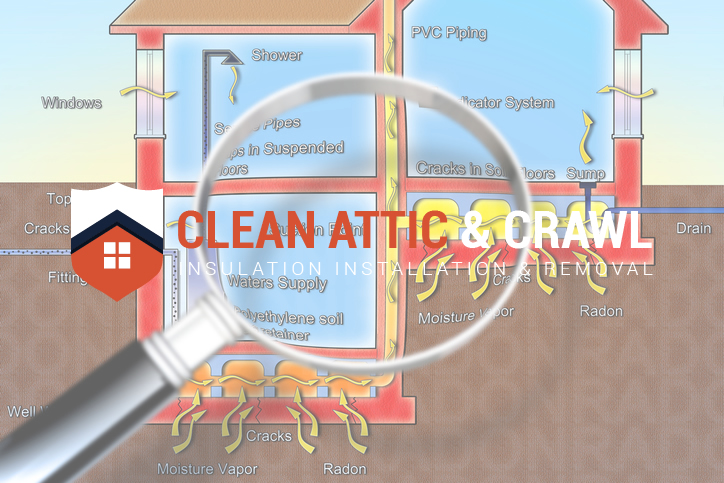The DIY’s Guide to Crawl Space Heaters When It’s Cold
When winter beckons, homeowners can’t stop worrying about the consequences that it brings. These include frozen pipes, high energy, and home maintenance expenses. If you’re caught up in such a situation, having the best crawl space heaters for heating your crawl space can come in handy. This guide will help you find the best crawl space heater for your needs.
Best Crawl Space Heaters to Buy
Can You Put a Heater in Your Crawl Space?
 Yes, you can. However, is it a good idea? The floors and walls in your home are bound to get quite cold during winter. As a homeowner, perhaps you reckon heating your crawl space is a perfect idea. It turns out that it’s not.
Yes, you can. However, is it a good idea? The floors and walls in your home are bound to get quite cold during winter. As a homeowner, perhaps you reckon heating your crawl space is a perfect idea. It turns out that it’s not.
In fact, having a heater in your crawl space can be hazardous. You may not know this but using a heating gadget will escalate your energy consumption. The worst thing is that it won’t control heat across your home which will increase your utility costs.
- HOW TO KILL MOLD IN YOUR CRAWL SPACE FAST
- I FOUND MOLD IN MY ATTIC! WHAT DO I DO?
- EASY GUIDE TO BUDGETING FOR ATTIC CLEANING COSTS
What are the Dangers of a Crawl Space Heater?
If you’re like many homeowners, you probably keep light bulbs and heating gadgets in your crawl space to stop pipes from freezing. Doing so is not only hazardous, but it’s also ineffective. One thing you may not know is that light bulbs can intensify the chances of fire. These methods also use lot’s of energy and may not be ideal for stopping pipes from freezing.
How Can You Stop Your Pipes from Freezing in the Crawl Space?
If you want to stop your pipes from freezing, the following tips will be ideal.
Insulate Pipes
Insulate both cold and hot water pipes in your crawl space in your attic, basement, exterior walls, and under your house using snap-on foam insulation. Ensure that the foam insulation fits well without gaps. Cover the joints using duct tape and apply miter foam around the elbows to ensure that the pipe joints are adequately covered.
Switch off the Sprinkler System
If you’ve got a sprinkler system, switch it off and blow in condensed air via the irrigation lines to remove the water
Heat the Pipes
Identify the most problematic pipes in your home and wrap them using UL certified heat tape with an inbuilt thermostat. This will help prevent overheating. Remember, the heat tape can catch fire easily. If you want to avoid this, ensure to follow the heat tape instructions carefully.
Filter Your Faucets
Filter both cold and hot water in faucets in your bathrooms and kitchen. This prevents water from penetrating through the pipes and removes inbuilt water pressure from the pipes when they freeze. Fix single lever valves at the center to allow both cold and hot water pipes to drip. Ensure to check all your pipes including those that run on the exterior walls.
Configure your Icemaker
If you’ve got an icemaker, you may want to set the gadget to produce ice when the icemaker water line penetrates beneath your house.
Laundry Room
Do you have a faucet in your laundry room to drip? If you don’t, put your washing machine on a warm setting and launch the filling cycle repeatedly for several minutes to allow water to run through the pipes.
Cabinets
Open your cabinet doors beneath the sinks in your bath and kitchen, especially if the cabinets are situated in exterior walls to allow heat inside the pipes.
Foundation
If your house has a crawl space, ensure that your foundation is entirely enclosed. Further, check for any gaps around the foundation walls and fill them using expanding foam or even caulking. Make sure your foundation vents beneath your house are covered or sufficiently closed when the weather is extremely cold.
Garage
When the weather is extremely cold, ensure to keep your garage doors closed.
Basement
Keep your weather strip exterior basement doors and windows closed.
External Faucets
If you want to safeguard your external faucets in your foundation, you may want to insulate or cover the faucets using foam covers and block water to the external faucets. Make sure to open the faucets in order to drain pipes. You may also install external faucets that block water supply in foundation walls.
Garden Hose
Ensure all your garden hoses are drained and disconnected during winter.
Make Sure there are no Leaks
When winter subsides, ensure to switch off any dripping faucets and the icemaker. Be sure to check your water meter to identify any leaks.
How Can You Prevent Energy Loss in Winter?
You should understand how to preserve energy during winter. Prepare before the onset of winter by hiring a crawl space professional who can insulate and vent your crawl space. This will not only help you cut down cost, but it’ll also ensure that the plumbing system is protected from extremely cold temperatures.
- EASY GUIDE TO CRAWL SPACE CLEANING REPAIRS
- DAMP PROOFING WITH VAPOR BARRIERS
- A SIMPLE SCHEDULE FOR CRAWL SPACE AND ATTIC MAINTENANCE
Finally
During winter, you may want to use heating gadgets to keep your home warm. However, as seen above, heating gadgets can be hazardous to you and your loved ones. You can seek the services of a qualified crawl space professional, or even adopt eco-friendly crawl space heating methods.


